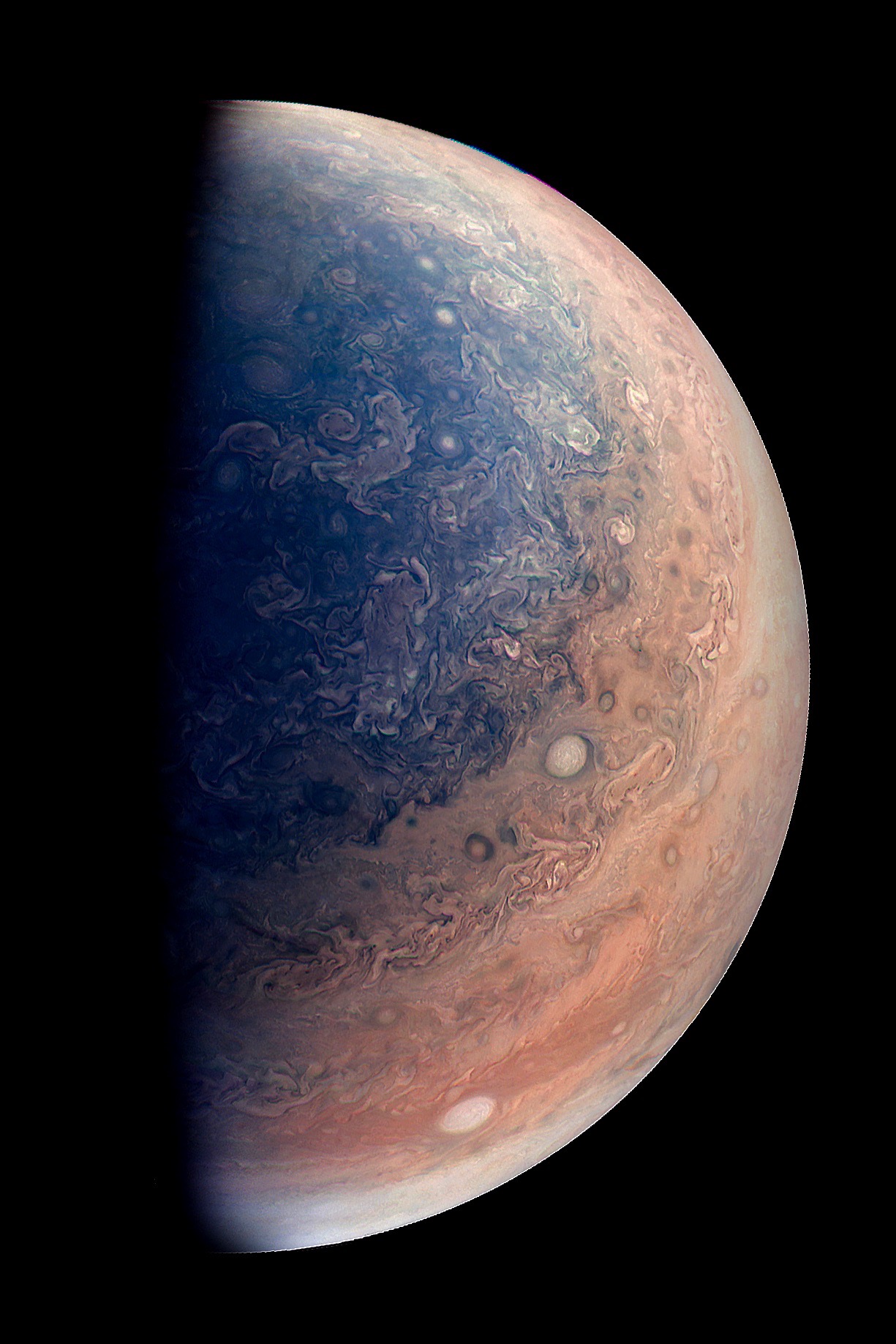Jupiter's Swirling South Pole Revealed in Citizen Scientist's Image

Jupiter's south pole is on display in an image created by a citizen scientist using data from NASA's Juno spacecraft.
The JunoCam instrument aboard the spacecraft snaps images of the Jovian giant each time Juno makes a close flyby, every 53 days. Those images are uploaded to the JunoCam website and are available for members of the public to process.
This newest image, created by citizen scientist Gabriel Fiset, uses enhanced colors to highlight the contrasting bands in Jupiter's atmosphere. The image also shows how the planet's atmosphere is filled with small, round, swirling storms not unlike Jupiter's famous Great Red Spot. [Awesome Jupiter Photos by NASA's Juno Probe]
JunoCam collected the raw image on Dec. 11, 2016, at 9:44 a.m. PST (12:44 p.m. EST), from an altitude of about 32,400 miles (52,200 kilometers) above the planet's cloud tops. Juno's path around the planet takes the probe over Jupiter's poles, which were not photographed previously or not observed in detail. The weather patterns at the poles are "unlike anything previously seen on any of our solar system's gas-giant planets," NASA said in a statement released last September.
The JunoCam project not only lets citizen scientists process Juno's raw data and create amazing images, but also welcomes citizens to vote on which features JunoCam should photograph during each flyby. The last flyby took place on March 27, and the next one will take place on May 19. To participate in the vote, go to the JunoCam website and click on the Voting tab. The website also features the JunoCam raw images and the images processed by citizen scientists.
Follow Calla Cofield @callacofield. Follow us @Spacedotcom, Facebook and Google+. Original article on Space.com.
Get the Space.com Newsletter
Breaking space news, the latest updates on rocket launches, skywatching events and more!
Join our Space Forums to keep talking space on the latest missions, night sky and more! And if you have a news tip, correction or comment, let us know at: community@space.com.

Calla Cofield joined Space.com's crew in October 2014. She enjoys writing about black holes, exploding stars, ripples in space-time, science in comic books, and all the mysteries of the cosmos. Prior to joining Space.com Calla worked as a freelance writer, with her work appearing in APS News, Symmetry magazine, Scientific American, Nature News, Physics World, and others. From 2010 to 2014 she was a producer for The Physics Central Podcast. Previously, Calla worked at the American Museum of Natural History in New York City (hands down the best office building ever) and SLAC National Accelerator Laboratory in California. Calla studied physics at the University of Massachusetts, Amherst and is originally from Sandy, Utah. In 2018, Calla left Space.com to join NASA's Jet Propulsion Laboratory media team where she oversees astronomy, physics, exoplanets and the Cold Atom Lab mission. She has been underground at three of the largest particle accelerators in the world and would really like to know what the heck dark matter is. Contact Calla via: E-Mail – Twitter









